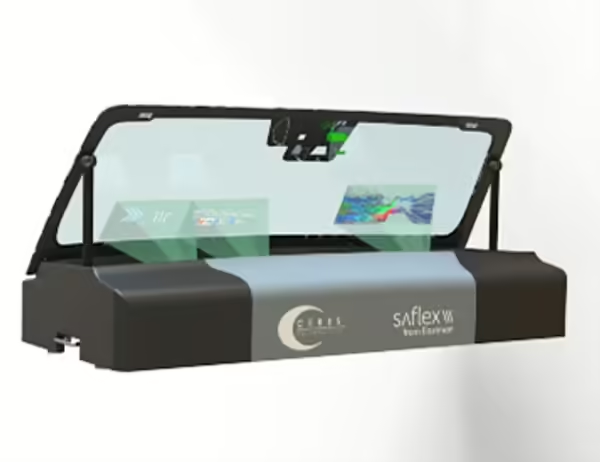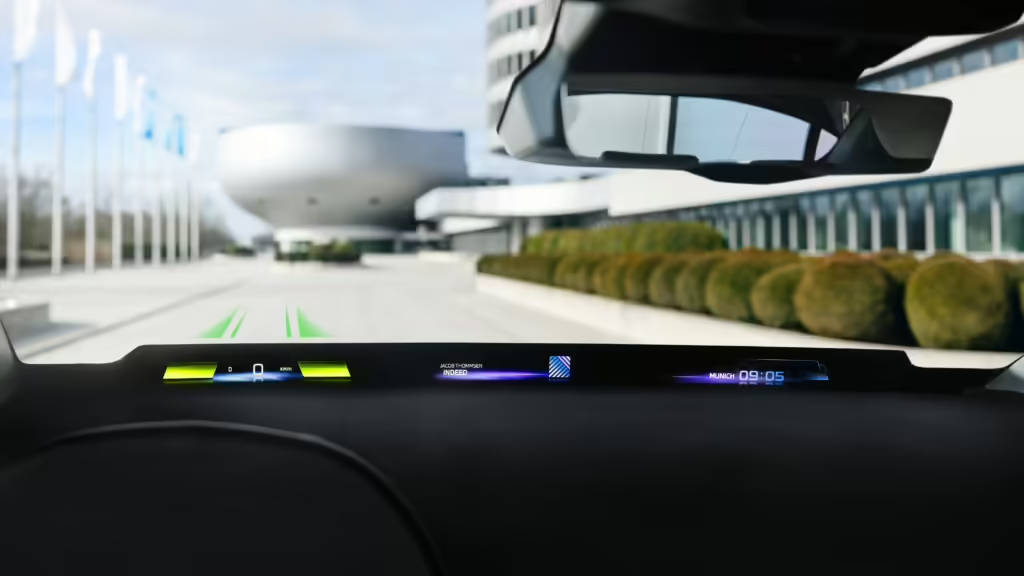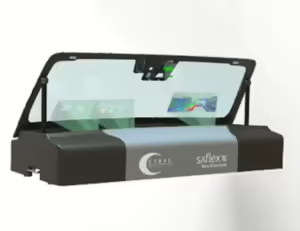Ceres Holographics and Eastman Chemical Group have come together to develop a windshield that incorporates multiple heads-up displays (HUDs) within a single laminated glass construct. This new windshield, showcased at Car.HMI Europe, uses Ceres’ technology to create films with several holographic optical elements (HOEs), which are then seamlessly integrated into the windshield glass using Eastman’s proprietary lamination techniques.

The companies are promoting the notion that traditional in-car displays, like large touchscreens, can be distracting for drivers. By embedding HUDs directly into the windshield, crucial information can be displayed within the driver’s line of sight, minimizing distractions and allowing for a safer driving experience. Multiple HUDs provide a flexible and customizable display area, allowing car manufacturers to tailor the size, position, and viewing angle of each display according to their specific needs.
Ceres’ manufacturing process involves copying each custom-designed HOE into a proprietary photopolymer film sized for windshields. Eastman’s advanced lamination techniques then integrate these films into the windshield, allowing content to be projected by compact LED projectors within the vehicle’s instrument panel.
MototTrend recently critiqued a panoramic HUD from BMW, which is a little bit of a different approach and invoiced and may give context to the Ceres’ approach. BMW’s Neue Klasse, a new generation of all-electric vehicles, has a Panoramic Vision display that spans the entire width of the windshield, allowing both the driver and front passenger to view it.

However, the reviewer says there are concerns about its implementation. Unlike the Ceres’ HUDs that project images onto a clear part of the windshield, the Panoramic Vision uses a large black border for image projection, potentially obstructing the view. While BMW demonstrates it can project onto clear sections, the overall approach raises questions about its practicality compared even to existing HUDs or even wide dashboard screens. This new system is expected to debut around 2025.
HUDs are probably going to gain more traction in the automotive sector because the concerns about the distractions of large-screens on dashboards is genuine and may even lead to regulations to limit their use. But things are not that easy for automotive HUDs either. the high cost of implementation, complexity in integration, and potential visibility issues under different lighting conditions are significant challenges. HUDs can inadvertently distract drivers if overloaded with information and require precise calibration to avoid distorted images. Ensuring technological compatibility with various car systems and addressing driver adaptation are also crucial. Maintenance and repair can be costly, and legal regulations regarding HUD use vary by region, adding further complexity for manufacturers.

